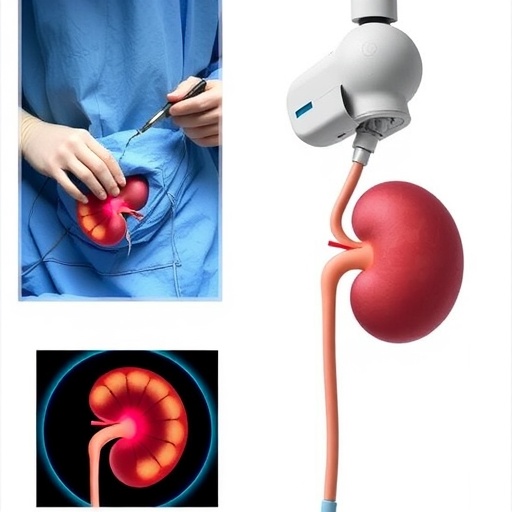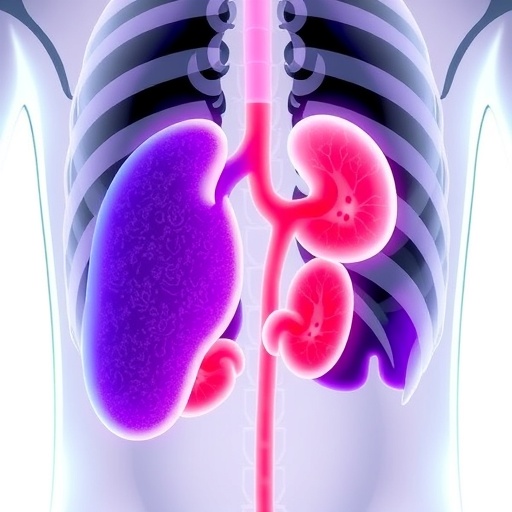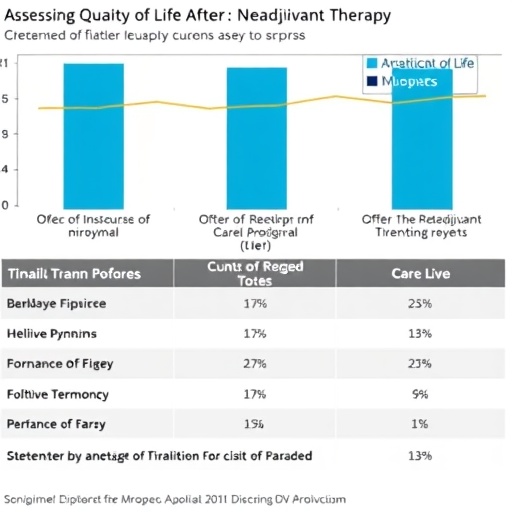In the evolving landscape of renal tumor surgery, a pivotal study has emerged contrasting laparoscopic partial nephrectomy (LPN) with its robot-assisted counterpart (RAPN) specifically for tackling intermediate to high-complexity endophytic renal tumors. Published in BMC Cancer, this patient-matched retrospective analysis illuminates the nuanced differences between these surgical modalities and their impact on renal function, perioperative outcomes, and long-term survival, defining a new benchmark for urological oncology interventions.
Renal tumors with a R.E.N.A.L. nephrometry score of 7 or greater denote intricate surgical challenges due to tumor size, location, and depth, particularly those that are endophytic, meaning deeply embedded within the renal parenchyma without protruding into the kidney’s surface. Treating such tumors requires balancing oncologic efficacy with preservation of maximal renal function, making the choice of surgical technique critically important.
This investigation harnessed a cohort of 191 patients undergoing partial nephrectomy procedures between mid-2011 and mid-2021. Among them, 120 underwent traditional laparoscopic partial nephrectomy while 71 received robot-assisted procedures. To neutralize potential biases related to patient selection and tumor characteristics, researchers employed propensity score matching, producing 70 meticulously matched pairs for rigorous comparison.
The primary aim was to evaluate operative parameters alongside critical measures of renal performance and oncological control post-intervention. Parameters such as warm ischemia time, which directly impacts renal tissue viability during surgery, were meticulously tracked alongside the achievement of composite composite surgical success metrics known as the trifecta and pentafecta, encompassing factors such as absence of complications, negative surgical margins, and preservation of renal function.
Findings revealed that RAPN offers distinct advantages in several operative and functional domains. Notably, the median warm ischemia time was significantly reduced by approximately four minutes in the robot-assisted group. This reduction is clinically relevant as prolonged ischemia time correlates with greater renal parenchymal damage, impacting postoperative kidney function.
In addition to more favorable ischemia profiles, the RAPN cohort experienced superior trifecta achievement rates, with 60% vs. 30% reporting optimal composite surgical outcomes, an indicator of the robot-assisted technique’s precision and safety in complex renal tumor excision. This is further underscored by less pronounced declines in estimated glomerular filtration rate (eGFR) shortly after surgery among robot-assisted patients, suggesting improved preservation of nephrons in the acute recovery period.
Despite these short-term functional benefits, the study also found that long-term renal function and oncological survival were comparable between LPN and RAPN, indicating that both modalities are similarly efficacious in disease control over extended follow-up. This parity emphasizes that while surgical technique nuances impact early recovery, ultimate cancer-related outcomes rely on comprehensive perioperative management and tumor biology.
Importantly, tumor complexity emerged as a critical independent predictor of surgical outcome success. Tumors falling into the high-complexity range of the R.E.N.A.L. score (10-12) significantly increased the odds of failure to achieve both trifecta and pentafecta benchmarks, underscoring the inherent challenges in managing deeply embedded, large, or strategically located lesions.
Similarly, the surgical approach itself influenced outcomes. LPN was independently associated with a higher likelihood of trifecta failure, with an odds ratio suggesting over fourfold increased risk compared to RAPN. This finding pragmatically advocates for the adoption of robotic technology in managing challenging renal tumors, where enhanced dexterity and visualization facilitate superior resection precision.
These outcomes resonate with contemporary shifts in urologic surgery, where robot-assisted platforms offer multidimensional advantages, including tremor filtration, articulated instrument maneuverability, and 3D high-definition visualization, collectively optimizing tumor accessibility while mitigating collateral renal parenchymal injury.
While RAPN’s superiority in short-term outcomes is clear from this analysis, the data also caution that the complexity intrinsic to certain tumors exerts a persistent impact on surgical success regardless of modality. This suggests that nuanced preoperative planning and individualized surgical strategy remain paramount, complementing the technological advances in operative technique.
From a practical standpoint, the implication of this study is profound. For patients harboring intermediate to high-complexity endophytic renal tumors, RAPN emerges as a compelling approach offering improved early renal function preservation without compromising oncological safety. This new evidence supports expanding the use of robotic platforms in centers equipped with requisite expertise and technology.
Researchers emphasize, however, that surgical expertise and institutional experience remain critical variables influencing outcomes. The studied cohorts benefited from surgeries performed at high-volume centers with dedicated urologic oncology teams, and such contextual factors should be integrated when extrapolating findings to broader clinical practice.
Another dimension underlined by the research is patient counseling. The difference in trifecta achievement rates between LPN and RAPN highlights the necessity of informed consent discussions encompassing not just cancer control but functional outcomes and postoperative recovery trajectories, fostering shared decision-making.
This thorough examination also underscores the value of propensity score matching in retrospective analyses, enabling more precise head-to-head comparisons by mitigating confounding clinical factors. Such methodological rigor enhances the credibility of conclusions drawn and guides evidence-based clinical guidelines development.
In summary, this landmark study delineates the measurable advantages of robot-assisted partial nephrectomy in managing complex endophytic renal tumors. By improving short-term renal function outcomes and trifecta achievements without compromising long-term results, RAPN substantiates its role as a transformative modality in urological oncology.
As surgical technologies continue evolving with innovations in robotics and imaging, integrating these tools into treatment paradigms holds promise for further elevating outcomes in renal tumor management. Continued research integrating molecular tumor profiling, advanced imaging-guided planning, and enhanced recovery protocols will likely augment the gains realized by these surgical advances.
In closing, the findings presented set a new standard, advocating for greater adoption of robotic surgery in sophisticated renal tumor resections. This shift not only promises improved patient outcomes but also paves the way for refined surgical precision, reduced morbidity, and ultimately, enhanced quality of life for patients navigating complex kidney cancer diagnoses.
Subject of Research: Surgical outcomes comparison between laparoscopic and robot-assisted partial nephrectomy in intermediate/high-complexity endophytic renal tumors.
Article Title: Comparison of laparoscopic and robot-assisted partial nephrectomy for intermediate/high-complexity endophytic renal tumors (R.E.N.A.L.-NS ≥ 7): a propensity score-matched retrospective study.
Article References:
Chen, L., Li, S., Zheng, F. et al. Comparison of laparoscopic and robot-assisted partial nephrectomy for intermediate/high-complexity endophytic renal tumors (R.E.N.A.L.-NS ≥ 7): a propensity score-matched retrospective study. BMC Cancer 25, 1477 (2025). https://doi.org/10.1186/s12885-025-14910-6
Image Credits: Scienmag.com
DOI: https://doi.org/10.1186/s12885-025-14910-6
Tags: complex kidney tumorsendophytic renal tumorsLaparoscopic partial nephrectomyoncological control measuresoperative parameters evaluationpatient-matched retrospective analysisperioperative outcomes comparisonR.E.N.A.L. nephrometry scorerenal function preservationrobotic-assisted nephrectomysurgical technique efficacyurological oncology interventions





